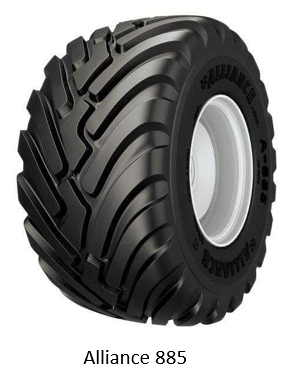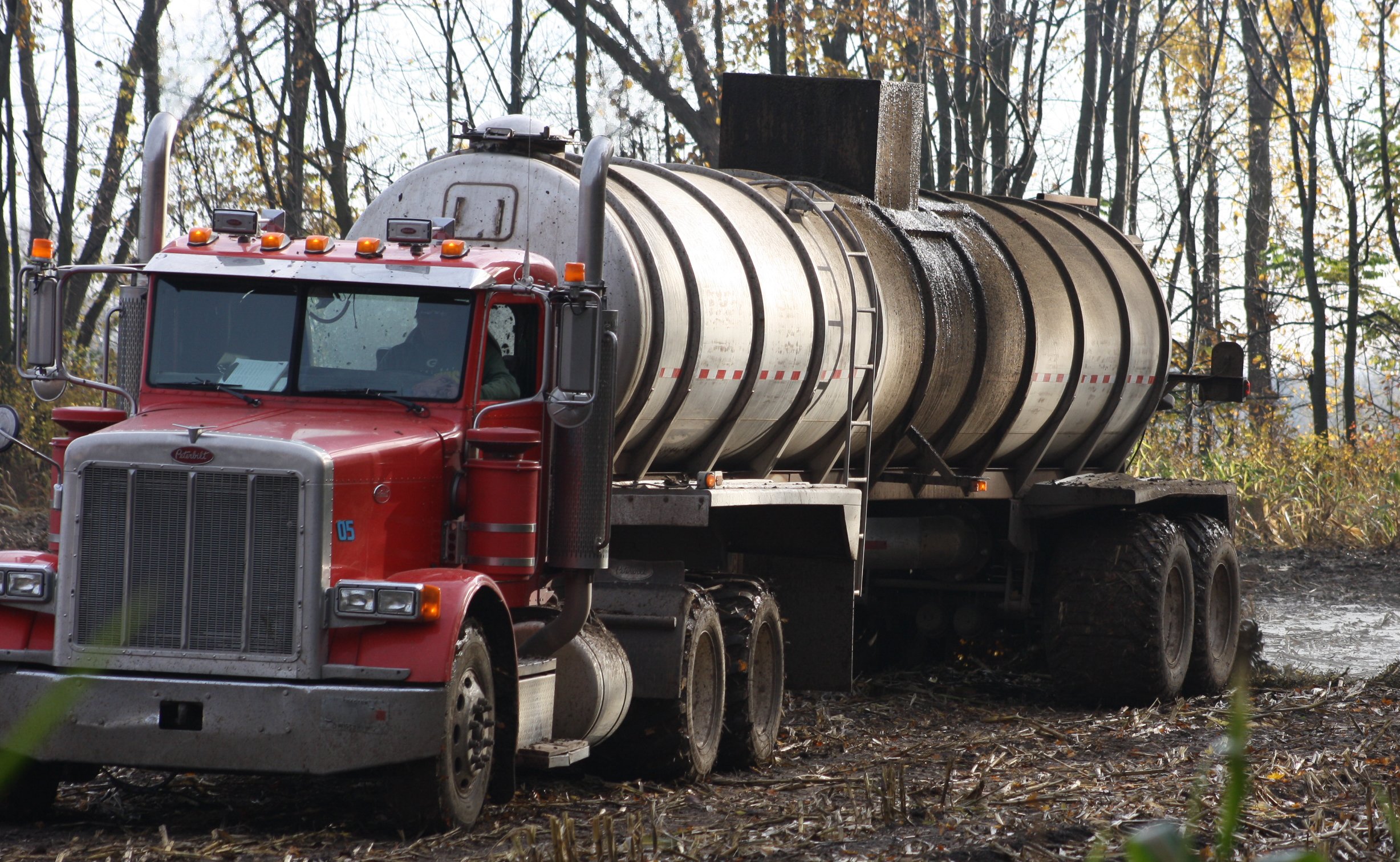The Qualities to Look for in an Agri-Transport Tire
Hauling heavy loads at or near highway speeds with heavyweight equipment like manure spreaders, fertilizer trucks, grain carts, and buggies requires everything to work flawlessly—including tires. The best agri-transport tires deliver high performance both on and off the road, provide long service life, and offer an outstanding return on investment.
Below are some characteristics to consider when choosing an agri-transport tire.
What to Look for in an Agri-Transport Tire
It’s easy to walk into your local tire dealer and choose an agri-transport tire based on factors like size, price, and what’s in stock. However, it can pay to take a more in-depth look at your tires, as the right set of tires can provide benefits like improved productivity, increased yield, and ultimately better profitability.
1. Radial or Bias Agri-Transport Tires
The use of radial tires on the farm continues to become more prevalent. While bias tires are advantageous in some applications—for example, some people prefer their stiffer sidewalls on machines that frequently work on hillsides—radial tires have the edge in many applications, such as agri-transport.
Heat dissipation: Agri-transport tires are commonly carrying high loads and traveling at high speeds, both of which can create a significant amount of heat. Heat is the number one enemy of tires and radials are superior at dissipating that heat, which allows them to better withstand its destructive forces and provide longer service life. That’s one reason radials generally last 30% longer than bias tires.
Footprint: Radials put a larger, flatter footprint on the ground than bias tires, which allows super-heavy agri-transport equipment to spread its weight over a larger area. This helps limit yield-sucking soil compaction and puts more lugs on the ground for increased traction.
Fuel economy: In the field, the improved traction provided by the larger footprint of radial tires means less slipping and more efficient use of fuel. On the road, radial tires have lower rolling resistance and require less energy to roll over terrain.
2. Versatility
Two of the most important characteristics of great agri-transport tires are their ability to carry heavy loads and their ability to travel at high speeds.
Loads: It’s vital that agri-transport tires are able to support not only the weight of the equipment but also what it’s carrying, no matter if it’s a tanker full of manure or a buggy packed with grain.
Speed: From going to the elevator to traveling between fields, agri-transport equipment is frequently required to travel on roads and at or near highway speeds. Radials are typically the superior choice for equipment that travels at high speeds and over long distances. Tires are given a speed rating, which is the maximum speed for safe operation. Common farm tire speed ratings are:
- A8 - 25 mph
- B - 30 mph
- C - 35 mph
- D - 40 mph
The more weight you put on a tire, the less speed it can achieve—and vice versa, the less weight you put on a tire, the faster it can travel. This is a big reason for the popularity of central tire inflation systems (CTIS), which allow operators to adjust inflation pressure on the go to meet their needs for load or speed—perfect for moving between fieldwork and roading. Before buying, make sure to consult a tire’s speed and load tables to ensure it meets your needs.
It’s also important to know that other factors, like inflation pressure and whether the tire is mounted on a drive or free-rolling wheel, also affect the speed at which a tire can travel and how much it can carry. In the end, ignoring a tire’s speed and load ratings is a recipe for an expensive and time-consuming blowout.
3. Steel Belts
Steel belts provide a multitude of advantages to agri-transport tires and can further increase the benefits provided by radial tires.
In the field: Steel belts provide additional puncture protection and help ensure the tire produces a flat, even contact patch on the ground, which is essential for distributing the weight of hefty agri-transport equipment and their loads.
On the road: The wide, even footprint of steel-belted tires helps reduce friction and, consequently, generates less heat. Steel belts are also more efficient than other types of ply material at dissipating heat. In the end, steel belts help tires running on the road last longer.
Alliance 885 Agri-Transport Tire
The Alliance 885 steel-belted flotation radial from Yokohama Off-Highway Tires possesses all the traits of a great agri-transport tire, as it excels both in the field and on the road and is capable of carrying heavy loads and traveling at high speeds. The Alliance 885 agri-transport radial is the latest in a long line of high-performance flotation radials: Alliance has been a leader in radial flotation technology for decades, and introduced the world's first VF flotation radial, too.
The recently released 885 sizes 850/50R30.5 and 710/40R22.5 have respective load indexes of 182D and 165D and D speed ratings. Or, more simply, the 85/50R30.5 can carry up to 18,700 pounds at speeds up to 40 miles per hour at 58 psi and the 710/40R22.5 can carry up to 11,354 pounds at 40 miles per hour at 73 psi.
The 885’s steel-belted radial construction and rounded shoulders help minimize its impact on valuable soil, while its innovative tread pattern provides traction in the field, resists wear on the road, and does an excellent job of self-cleaning—leaving manure and dirt in the field and not on the road.
The Alliance 885 offers farmers an excellent opportunity to switch from bias tires to radial and start harvesting rewards such as improved performance and longer tire life, along with less obvious advantages like reduced soil compaction, which can have a lasting effect on yields.
Alliance Whole Farm Concept
The Alliance 885 steel-belted flotation radial is a great representation of our Whole Farm concept. That is a commitment to providing low-compaction tire options for nearly every piece of equipment that enters the field and every stage of the farm cycle. Whether it’s adopting high-tech tires like IF/VF, mounting high-flotation tires like the Alliance 885, or switching from bias to radial, Alliance has a tire option to help farmers reduce compaction and improve productivity.
The most successful farmers are always looking at every aspect of their operation and questioning where they can improve. Tires like the Alliance 885 provide an answer—helping boost production, increase efficiency, and reduce costs. Contact your local Alliance dealer or rep to learn more about how your farm can benefit by using our tires.



